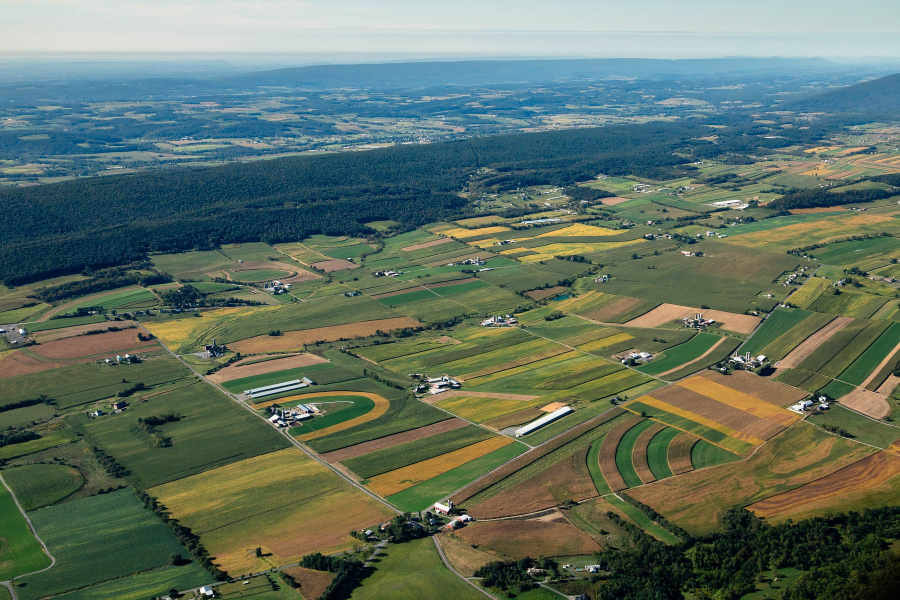Pennsylvania farmers and environmental partners restore sections of the Turtle Creek watershed
Portions of the watershed have been taken off of the impaired stream list

It took a multi-year partnership between farmers and environmental groups to clean up Pennsylvania’s Turtle Creek watershed, a 12.7-square-mile basin where portions have now been removed from the Clean Water Act’s impaired streams list.
Turtle Creek is in the heart of a rich farming community where waterways eventually drain to the Chesapeake Bay via the Susquehanna River. In the past century, as much as 47% of the trees that once protected Turtle Creek were turned into farmland, a one-two-punch that is a common story across the entire Chesapeake Bay watershed.
Without trees to stabilize the stream banks, many waterways began to erode, clouding the water with sediment that keeps critical plant life from growing. Cattle wandering into the streams further eroded the banks and their manure added unhealthy levels of nutrients to the water. At farms without many streamside trees or vegetation at the edges of the property, fertilizer and manure runoff from the fields also spiked nutrient levels. High nutrient levels cause algal blooms, which remove oxygen out of the water when they die off.
When sections of Turtle Creek watershed were first added to the impaired stream list, the Pennsylvania Department of Environmental Protection (DEP) developed a restoration plan that relied on local partners to implement the necessary practices. Taking the lead on this effort was the Northcentral Pennsylvania Conservancy (NPC), a partnership of state agencies, county conservation districts, nonprofits and willing landowners called to implement the necessary land practices.
While many farmers in the region were already using practices that limited sediment and nutrient runoff, NPC began to enhance existing practices and help implement new ones. So far in the Turtle Creek watershed, the NPC has installed 1,368 stream-stabilizing structures, 10,927 feet of streambank fencing to keep cattle out of the water and 19 stream crossings for the livestock to use. As a result, the two sections of Turtle Creek watershed is clean enough to no longer be on the impaired streams list.
“The Turtle Creek watershed is a prime example of how strong partnerships, innovation, and sustained and strategic investments have restored local streams,” said Jessica Shirley, the acting secretary of the Pennsylvania DEP.
Landowner and farmer Josh Satteson was one of the first to put new practices on his property. Satteson’s cattle once grazed across the farm and contributed to the erosion of his stream bank, which inspired him to take action. He worked with various NPC partners to stabilize the stream, add fencing around the waterways for his cattle and create a safe way for them to cross. Several trees were also planted along the section of stream running through his property.
In a video produced by DEP, Satteson says that the farming community is just as concerned about water quality as other organizations are. “We make our living from the land, and we want the land to be good,” said Satteson.
Greg Brown, another farmer in the area, was inspired by the project on Satteson’s property and decided to make changes to his land as well. Brown says that the permitting, design and installation were all done by various environmental groups, and has resulted in a cleaner stream that benefits his farm.
“It’s nice to see how good management programs [and] good stewardship of the land has brought this stream back to what I grew up with,” Brown said in the DEP video.
Similar work continues across Pennsylvania, where centuries of agriculture have changed the health of the Commonwealth’s waterways. Agricultural pollution flowing to the Bay from the Susquehanna River continues to be one of the greatest sources of pollution for the estuary, but efforts such as the one in Turtle Creek have made a positive impact both locally and downstream.
“Today, at Turtle Creek, the conservation community has proven the power of partnership by implementing a strategic and focused approach to improving agriculturally impaired waterways, marking a turning point for the Chesapeake Bay restoration movement,” said Joel Dunn, President & CEO of the Chesapeake Conservancy.

Comments
There are no comments.
Thank you!
Your comment has been received. Before it can be published, the comment will be reviewed by our team to ensure it adheres with our rules of engagement.
Back to recent stories